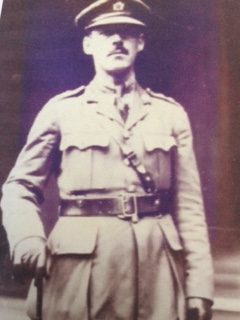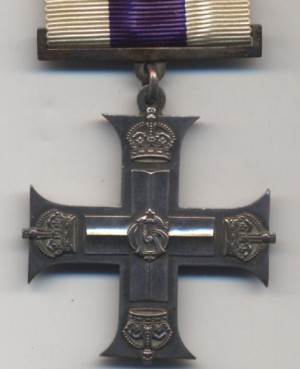Personal Details
Born: 8 July 1886 in Ingatestone, Mountnessing, Essex and baptised on 25 July 1886 in Essex.
Family: He was the eldest of six children born to John Riley, a coachman (later a farmer in Canada) and his wife Helena Annie, nee Ely. He married Beatrice May Hood – Barrs on 29 April 1922 in Vancouver, British Columbia, Canada. The couple had a son, Michael born in 1923.
Residence: In 1891 his family were living at Broughall House Lodge, Broughall, Shropshire. By 1901 they had moved to Ash Wood Lane, Ash Parva, Shropshire. The family emigrated to Canada in 1903 and at the time of his Attestation in 1914 he gave an address of Celista, British Columbia. In 1921 his home was Celista, Shuswap Lake, Cariboo, British Columbia. He and his wife were living at 4495 Marine Drive East, Vancouver, British Columbia in 1935.
Employment: In 1914 he was a saddler and in 1921 a farmer. By 1935 he was a manager for an export company.
Died: 8 April 1937 in Vancouver, British Columbia, aged 50.
Military Details
Regiment: Canadian Expeditionary Force (Canadian Railway Troop, previously 2nd Canadian Mounted Rifles)
Rank: Acting Captain (previously Trooper)
Service Number: 107513
Date of Enlistment: 8 December 1914
Date of Discharge: 1 September 1920
Reason for Discharge: Demobilisation
Other Information: In September 1916, whilst serving in France, he suffered a gunshot wound to his face. His brother Christopher, also served with the Canadian Expeditionary Force during WW1.
William was awarded the Military Cross (London Gazette 23 July 1918), Military Medal (London Gazette 6 January 1917) and bar (London Gazette 23 February 1918) and Campaign medals (1915 Star, Victory and British War Medals)
His citation for his Military Cross reads: ‘ For conspicuous gallantry and devotion to duty in attempting to save two 12 inch railway howitzers, and in saving a locomotive which would have fallen into the hands of the enemy. A number of breaks had to be repaired, and at one part of the journey the engine had to be taken over an 8 inch break in the rails. In spite of heavy machine gun and rifle fire he was successful, and the engine was then used to haul a trainload of material. He showed great courage under very trying conditions.’ The entry in the London Gazette reads: ‘For conspicuous gallantry and devotion to duty. He kept the guns of the forward section in action under intense fire for seven hours, firing 800 rounds from two guns. He only retired when the enemy opened machine gun fire at 150 yards, first putting his guns out of actions, and getting his men away with a minimum of loss.’
His citation for his first Military Medal reads: ‘During the whole of operations from September 27th and 28th until relieved this NCO obtained valuable information, particularly by getting in touch with elements of the company on our right, when machine gun fire was most intense. About 6 pm on the afternoon of the 29th the right flank of A Company was ‘in the air’ and the enemy making every endeavour to force our block. It was seen that a gap connecting the Company right flank with elements of B Company was necessary, the position of either not being known to the other. Cpl Riley took a bundle of stakes and a shovel and under heavy rifle and machine gun fire staked out about seventy feet of trench, which was dug and consolidated thus ensuring the safety of our flank.’
The Military Cross is the third-level military decoration awarded to officers and (since 1993) other ranks of the British Armed Forces, and used to be awarded to officers of other Commonwealth countries.
The Military Cross is granted in recognition of "an act or acts of exemplary gallantry during active operations against the enemy on land to all members, of any rank in Our Armed Forces". In 1979, the Queen approved a proposal that a number of awards, including the Military Cross, could be awarded posthumously.
Click on the tag below to see details of each recipient.

Until 1993, the Military Medal (MM) was a military decoration awarded to personnel of the British Army and other services, and formerly also to personnel of other Commonwealth countries, below commissioned rank, for bravery in battle on land.
The medal was established on 25 March 1916. It was the other ranks' equivalent to the Military Cross (MC), which was awarded to commissioned officers and, rarely, to warrant officers, although WOs could also be awarded the MM. The MM ranked below the Distinguished Conduct Medal (DCM), which was also awarded to non-commissioned members of the Army.
Click on the tags below to see details of each recipient.

The 1914 Star (also known as 'Pip') was authorised under Special Army Order no. 350 in November 1917 and by an Admiralty Fleet Order in 1918, for award to officers and men of the British and Indian Expeditionary Forces who served in France or Belgium between 5 August and midnight of 22–23 November 1914. The former date is the day after Britain's declaration of war against the Central Powers, and the closing date marks the end of the First Battle of Ypres.
The 1914–15 Star (also known as 'Pip') was instituted in December 1918 and was awarded to officers and men of British and Imperial forces who served against the Central European Powers in any theatre of the Great War between 5 August 1914 and 31 December 1915. The period of eligibility was prior to the introduction of the Military Service Act 1916, which instituted conscription in Britain.
The British War Medal (also known as 'Squeak') was a silver or bronze medal awarded to officers and men of the British and Imperial Forces who either entered a theatre of war or entered service overseas between 5th August 1914 and 11th November 1918 inclusive. This was later extended to services in Russia, Siberia and some other areas in 1919 and 1920. Approximately 6.5 million British War Medals were issued. Approximately 6.4 million of these were the silver versions of this medal. Around 110,000 of a bronze version were issued mainly to Chinese, Maltese and Indian Labour Corps. The front (obv or obverse) of the medal depicts the head of George V. The recipient's service number, rank, name and unit was impressed on the rim.
The Allied Victory Medal (also known as 'Wilfred') was issued by each of the allies. It was decided that each of the allies should each issue their own bronze victory medal with a similar design, similar equivalent wording and identical ribbon. The British medal was designed by W. McMillan. The front depicts a winged classical figure representing victory. Approximately 5.7 million victory medals were issued. Interestingly, eligibility for this medal was more restrictive and not everyone who received the British War Medal ('Squeak') also received the Victory Medal ('Wilfred'). However, in general, all recipients of 'Wilfred' also received 'Squeak' and all recipients of The 1914 Star or The 1914/1915 Star (also known as 'Pip') also received both 'Squeak' and 'Wilfred'. The recipient's service number, rank, name and unit was impressed on the rim.


